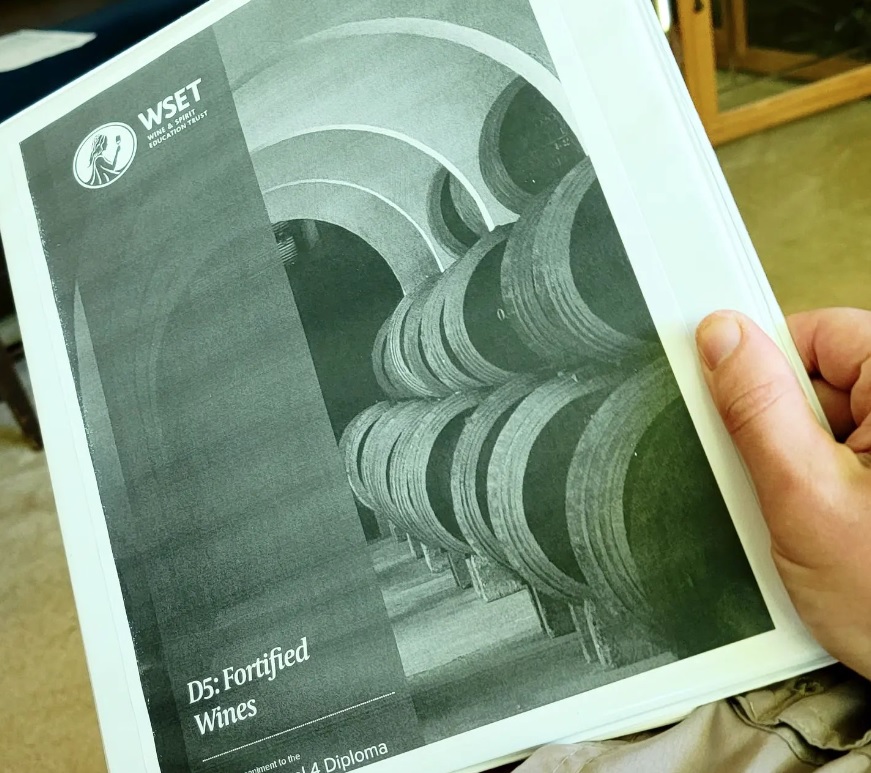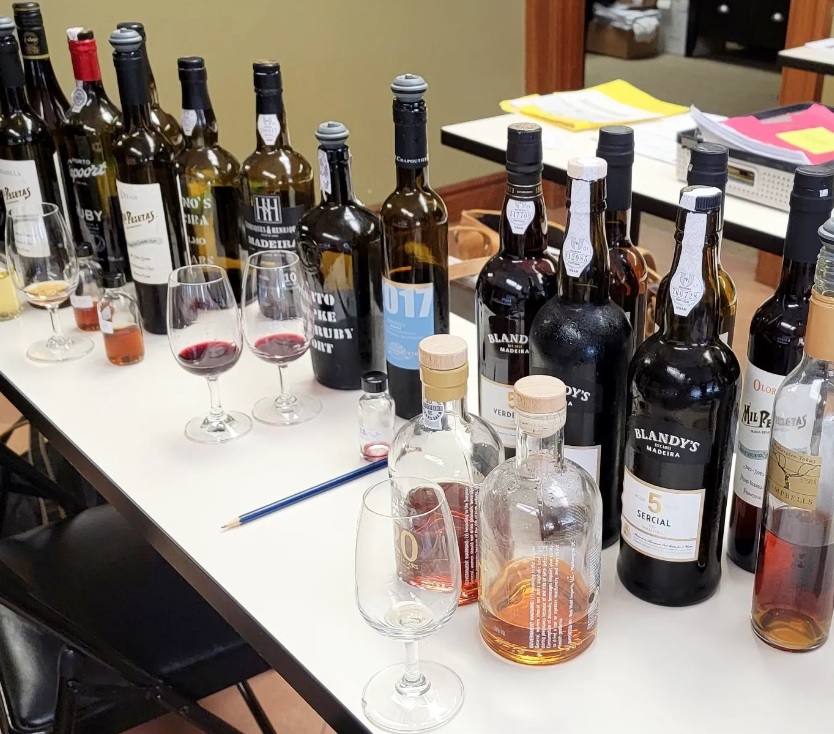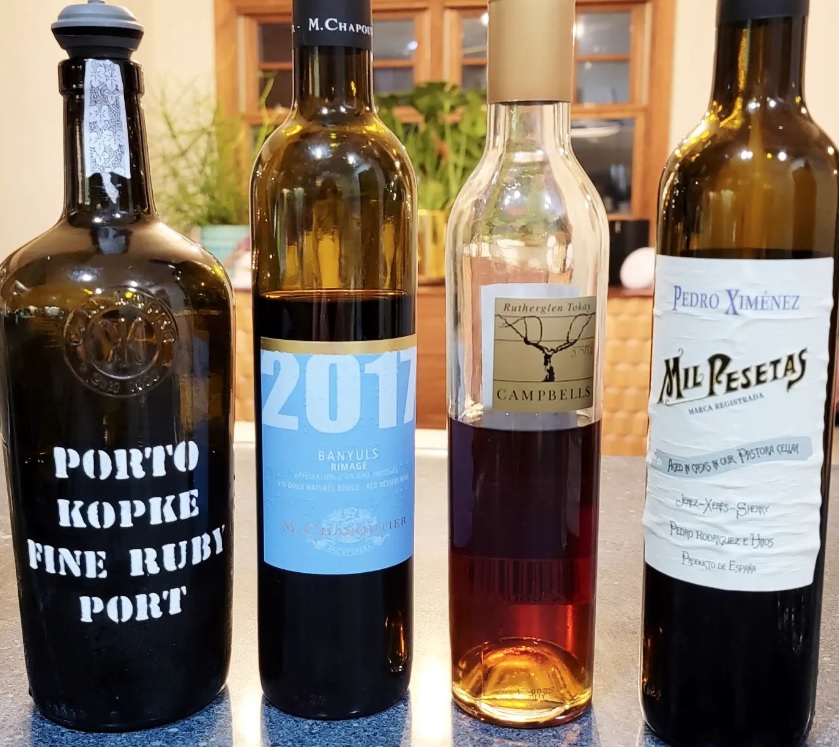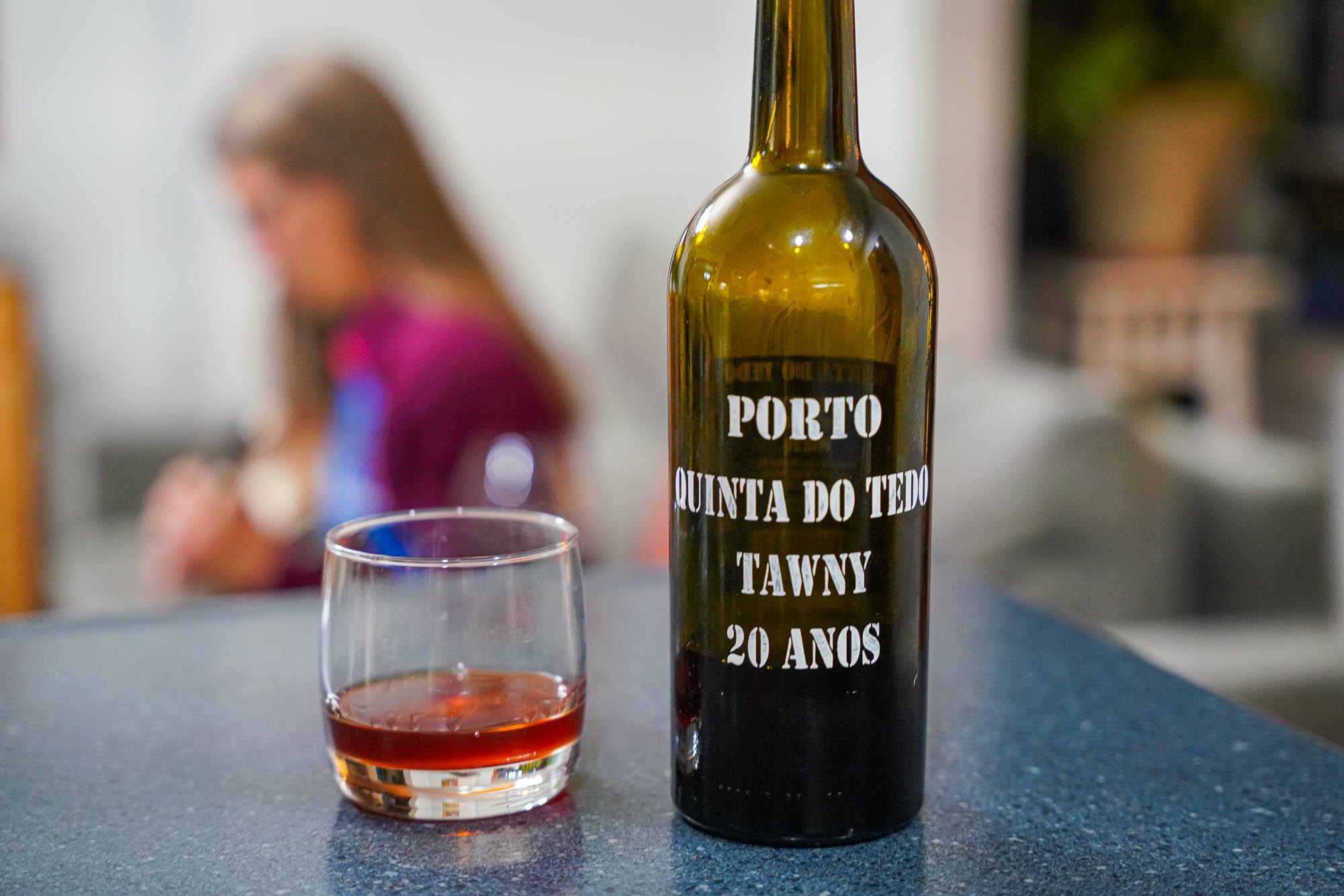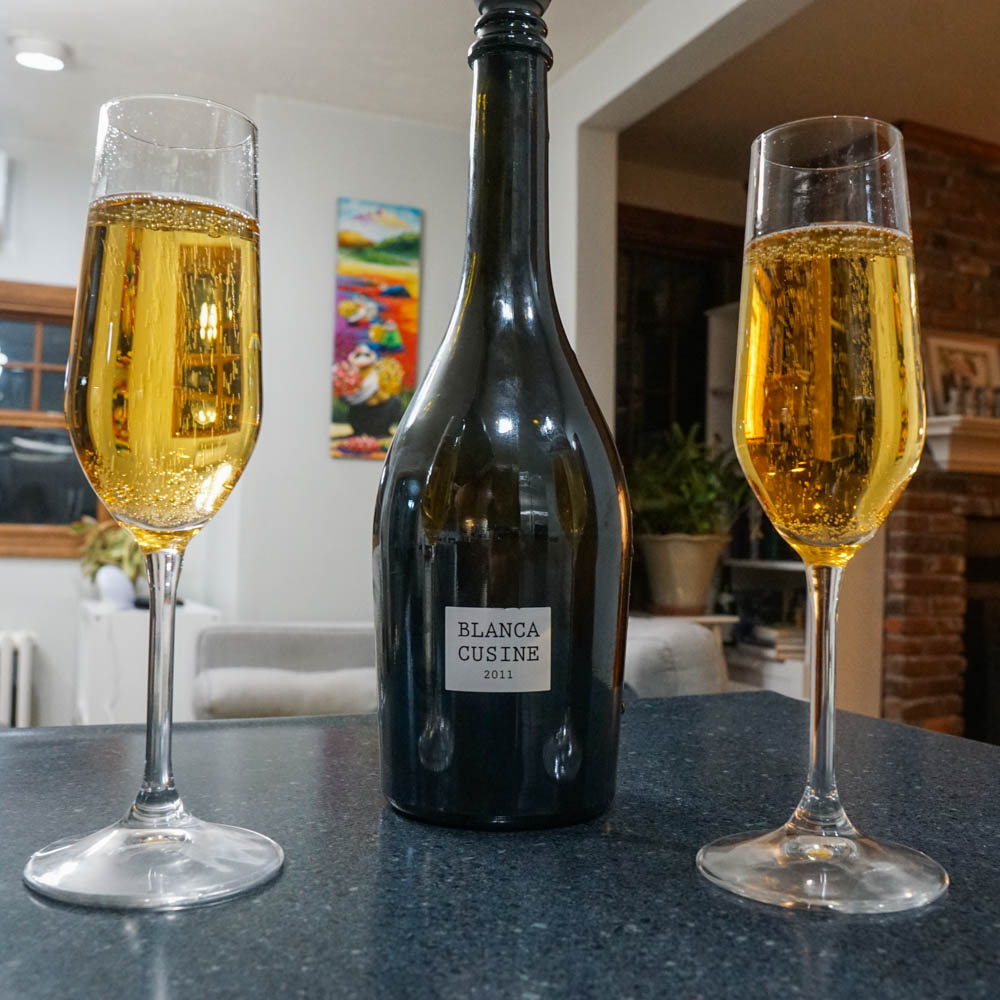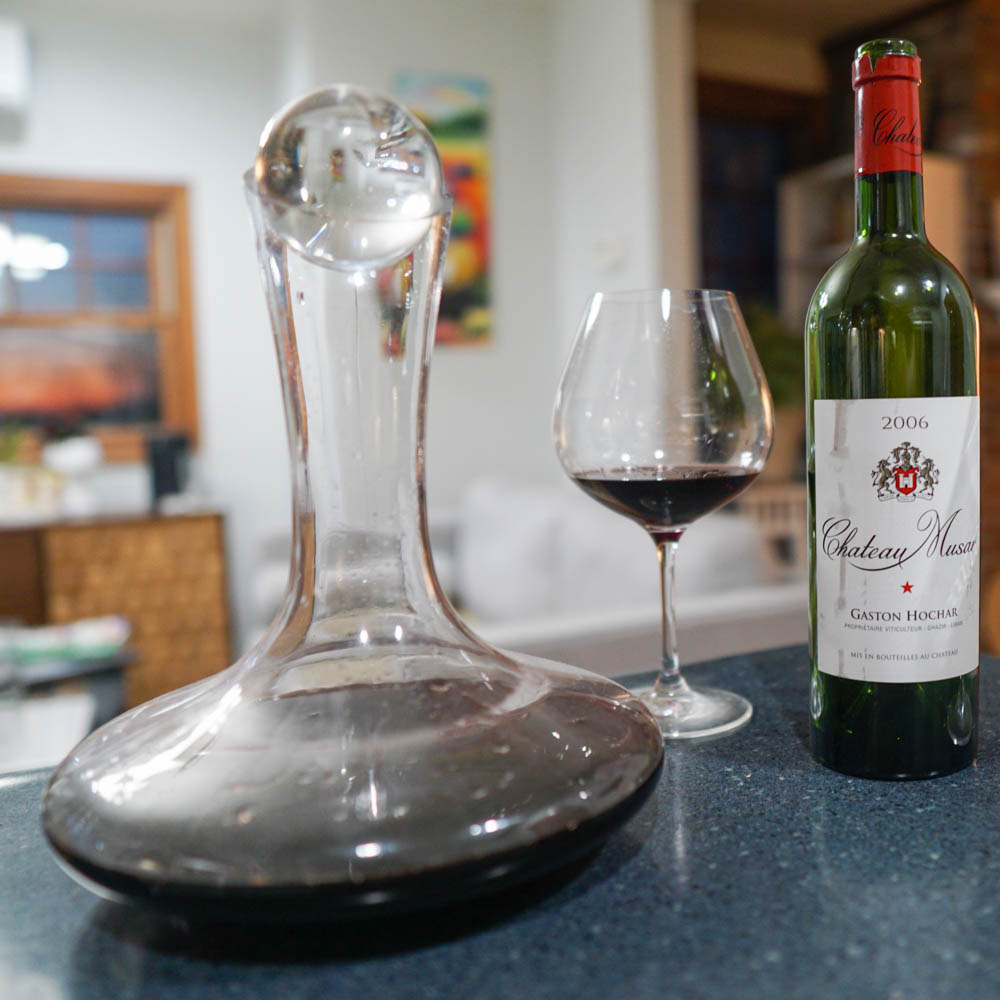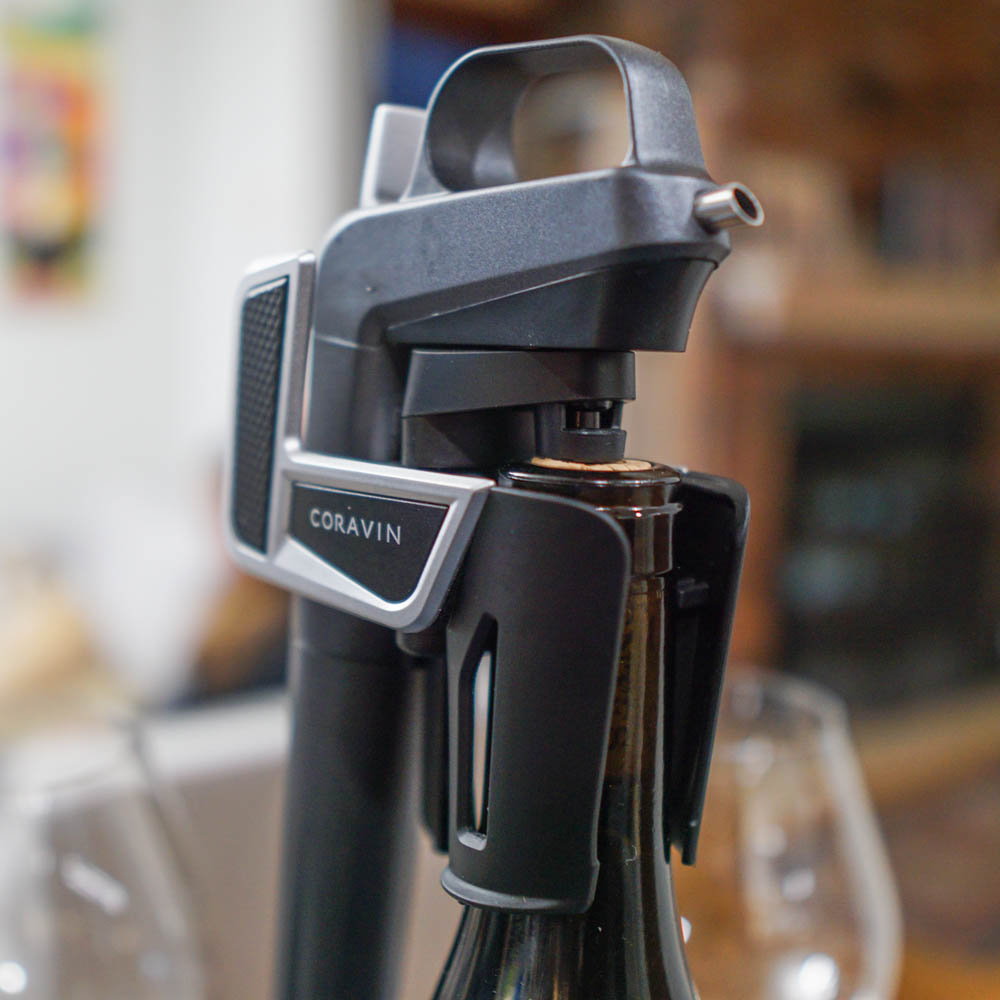Published by Jeremy.
Disclaimers: We use demographic data, email opt-ins, display advertising, and affiliate links to operate this site. Please review our Terms and Conditions for more information. This website is intended for those of legal drinking age in your jurisdiction.
WSET Diploma's D5 module is all about fortified wine. On the surface, this one sounds like a somewhat straightforward module if only because there aren't that many fortified wine categories and styles out there in the world.
But, as with all things WSET, simply stating this fact makes the program easier said than done. The exam, as always, is pretty insane.
So in this one I wanted to break down what you can expect for the exam and give some tips for studying!
Note: I took the WSET Diploma D5 exam in June 2022. Test material and structure can and does change over time. I passed D5 with merit.
What to Expect in the WSET D5 Exam
The WSET D5 fortified wine exam may be a short program (just three weeks of classes plus a practice test for me) with an equally short book (about 70 pages) but packs a whole lot into the course material- almost to the course's detriment.
During my 2022 class, the book was split up into sections on how fortified wine is produced (in general terms) plus focused chapters on the topics of Sherry, Port, Madeira, Vin Doux Natural, and Rutherglen Muscat. The first three styles were rather robust and took up the bulk of the book, whereas the VDN and Rutherglen chapters were incredibly condensed over what they could've been.
While not terribly large by any means, this one goes into some serious depth with discussions ranging from rootstock choices to geography concerns, history, laws, maturation techniques, and of course the dozens upon dozens of grapes and styles used in fortified wines, their growing conditions, pest and disease concerns, and so much more.
The exam, like D3 and D4 in the Diploma level, consists of a theory exam and a tasting exam and, for D5 at least, is completed in a single 90-minute seating. D4 and D5 require you to pass both tasting and theory with an aggregate score of 55% and no less than 45% in either lower section (D3 is separate at 55% each). If you fail despite this aggregate bonus, well, you have to re-test both sections again (D3, being separate exams, you typically does not require this)!
As such, you have to be very prepared for this course going into the exam- one bad wine or one hard theory question at 40% really could make or break how your chances of success. So let's talk about each of those individually for a moment:
- The theory exam consists of essay questions that can be as short as 5-points Define questions/10-point Comment On questions that can be answered in a sentence all the way to 50-points Compare & Contrast or Evaluate questions that require several pages of answers.
- The tasting exam consists of three fortified wines that are tasted completely blind and you are responsible for filling out the WSET tasting grid, performing a quality assessment (while justifying your choice in sentences), and likely some follow up questions that could be to guess the country of origin, guess the category (port), guess the category and style (tawny port 20 year), discussing the wine's suitability for aging, and other more detailed questions that could be grape specific (e.g. “what maturation techniques were used”).
As with all of my exam articles, I never share what questions I had, but I thought my particular exam was very straight forward with no ambiguous questions (like my D2) and very recognizable and representative wines even if I struggled in a few categories overall.
What makes this exam tricky is less the content (if you're lucky on exam day) and more that both sections are administered in a single sitting- so time management is key here. I really felt like I needed 10 more minutes at least, if not 15 or 20 when it was all said and done. We will be talking about this one more later on.
Likewise, as WSET D5 is all on the focused topic of fortified wines, we're discussing a lot of nuance in addition to the depth. For example, when practicing for my blind tasting, I noticed a young Grenache VDN from Banyul tasted quite similar to a young Ruby Port. As the particular VDN didn't have many floral notes to let you know it had a Muscat blend, you had to look for category differences in acidity, sugar, and alcohol and that required a lot of studying to memorize (read: drinking).
Finally, it is worth noting that in Diploma level WSET can even take points away! This one sounds rare, but the way the course material is written it sounds like you could be docked a point if you phone things in (e.g. medium assessment the entire way through), attempt game theory too hard (e.g. writing out every dark fruit there is to get the points), or are so wrong that it is simply too painful to read (e.g. calling a Pedro Ximenez dry when sweet is literally the only option without question). While it is unlikely that being wrong once or twice will cause you to be docked a point even if you are wrong, it really does highlight that you simply must know the material all the same.
As such, you need to come up with a solid plan of attack for both studying and test-taking here. For this particular module, we have a lot to talk about both so we're splitting this up into two sections- one on how to prepare and one on what to do on test day.
Tips for Preparing for the Exam
First off, let's talk about something that is somewhat easy about WSET Diploma D5- there aren't that many fortified wines that can be tested on. This makes preparing just a little bit easier.
Out of each major category mentioned above, most only had somewhere between 6 to 8 unique styles within them (of course, all coming in with an array of qualities as well). Some have PDOs that set the rules for production and some are fully open to winemaker choices. But at the end of the day, we're only talking about five broad categories and 40-50 unique styles of wine, and we can use that to our benefit when studying.
As with other exams, my studying process included reading the book about six times as well as crafting a 10-page set of notes from the live sessions with Capital Wine School focusing on things I didn't know outright (and reviewing those weekly as well). As we're talking about very minute differences between the styles, my notes were general on some topics and very, very specific on others. I also used Brainscape flashcards which, while not officially WSET sanctioned and possibly having errors, helped me with keyword recognition because I am too lazy to make my own flashcards.
But my notes also went one step further and, after sufficient practice with tasting, also involved creating a spreadsheet of grape facts (potential alcohol, ripening timelines, growth risks) and winemaker choices for the finished wines (maturation, ABV targets, sugar targets, quality ranges, flavor targets, etc) plus a flow chart diagnosing what potential styles could match given colors, aromas, acidity, flavors, and alcohol levels. The latter was especially helpful because I could then take any given criteria (lemon color, high alcohol).
In just a handful of pages, these notes, tables, and flow charts helped create a powerful tool for me to memorize topics that would likely be needed for the exam. In the flow chart, for example, I'd drill down things like if my wine is white and has floral aromas, it is likely a VDN. If it is white, higher in acid, medium in alcohol, and dry to off-dry, it is probably going to be a Sercial Maderia. For most categories like this, there is really only one or two wines that could even fit. Then, my tables helped me remember what maturation steps, laws, and grape issues come into play for any corresponding theory questions.
This is the level of detail that is required to start understanding the subtle differences between fortified wines.
But then you also need a plan of attack to study for the tasting portion of the exam as well. Hopefully you'll be taking a class from a school that supplies wine samples (a must-do in my opinion), but this is only scratching the surface. Between myself and another local student we were able to buy bottles within each category as well for many blind tastings and side-by-side tastings as well.
The latter was among the more instructive forms of studying for me because I was able to put some wines that are quite similar in side-by-side tasting to understand how minor differences impact the flavor. Some pairings we tried were the following:
- Cream Sherry and Tawny Port
- Rutherglen Muscat and Pedro Ximenez
- Ruby Port and Banyuls/Maury VDN
- White Port and Boal/Malmsey Madeira
- Aged Sercial vs Oloroso Sherry
There are many other combinations you may find to be valuable to try side-by-side (like conventional spreads of Sherry or Madeira outright), and crafting these pairings should be to help you isolate key differences either being acid, alcohol, flavors, or something else that you haven't quite memorized outright. To put it bluntly, you more than likely can't tell the difference between many of these until they are quite literally right next to each other.
I also made sure to have many of these available for the night before the exam plus a few extreme examples to try right before exam time as well (but not too many to risk blowing out my palate). Every bit helps here!
Logic to Consider on WSET D5 Exam Day
On test day, well, you have the luck of the draw when it comes to the wines and questions you receive. This is, as always, the absolute worst part about WSET Diploma.
As with all WSET tests, as you cannot take all of your notes into your exams, I start with my go-to style of test-taking. This involves sacrificing the first few minutes of the exam to write out a “key” of topics that I don't want to miss out on talking about on any essay portion. You likely have read about this in my other posts for D1, D2, etc. so I'm just going to skip into sharing my list below of keywords that helped jog the memories of all of the above study sheets on test day (although I should note I wrote many of these in short hand to write them out faster during the exam- some are noted below):
As you can see, this list helped me remember a number of core topics important to D5 and is heavily tailored to stuff I personally forget (so your list may vary). I underlined flavor, quality, price, and why because at the end of the day they want you to always elaborate why a choice was made and how it affects things like flavor, quality, and final price. The rest are just other details I typically forget about be it IVBAM regulations in Madeira, the classifications of sherries, or D1 and D2 topics outright.
As with every exam, you can't have notes going into things, so you have to wait to write these out on scratch paper once the proctor says you may begin (and practiced a ton so I could write out those 40 in about 1.5 minutes or less). A worthy sacrifice to not forget about any of these core topics outright in the event of getting flustered. Much like my other exams, this was priceless and helped me a lot.
D4 and D5 are also odd ones because tasting and theory are lumped into the fixed 90-minute test, so you need to also have a plan of attack for how you're going to approach things outright.
I opted to start with the tasting component first. The reason I did this is that I knew I'd probably get lost in time with the essays and I wanted to at least get started on tasting my wines to hedge my bets overall (again, a bit of game theory here). But instead of doing all of the wines at the start, I only did my notes for the appearance and aroma components to start just to give my ideas on what the wines could be and which to start with first later on (dry ones if you have them- never start with a sweet one as it can wreck your palate).
Then it was back to theory for 40 minutes or so to bang out as much as I could before returning to the wines themselves- hopeful that something listed on a paper somewhere could help later on (not to mention, let more aromas open up as the glass sites for a while). Despite having 90 minutes, my goal was to get as much of the theory done as possible in 40 minutes, wine tasting done in 20, then have a 30-minute buffer to focus on any high point questions or to focus on minor details that need addressed in earnest.
On the theory side of things, this meant I had to make some sacrifices. I was lucky that three of my questions were fairly evenly spaced with points and only one was shorter, so I spent more time on the three big ones and likely cut out a few crucial minutes on the shorter one than I would've liked (as an 80% score on a 10 pt question is only losing 2 points, but 80% on a 40 point question is losing 8 points!).
On the tasting side of things, it is important to note that the prompts you get can be sparse. They have large boxes with questions labeled appearance, aroma, taste, quality assessment, and capacity for aging as well as follow-up questions at the end (and possibly on the back page, be sure to turn it around!). As such, knowing your WSET terminology inside and out is key here because they won't give you much to go on. I definitely forgot alcohol on one wine and forgot to put parenthesis around (+) on another- thankfully, I caught these in my very quick review towards the end. Seriously count that you have all of the SATABFFF notes as they're stupid points to lose. (SATABFF is shorthand for the tasting grid- sweetness, acidity, etc. through to flavor intensity and finish.)
Likewise, while bullet points may be accepted I made sure to write in sentences- especially for the quality assessments and follow-up questions.
Ultimately, when it comes to taking these exams, it is important to have an understanding of what WSET wants Diploma level students to get out of the modules. Apart from a deep dive in material, they simply want you to be able to give a robust explanation on any given topic, have a firm grasp of how winemaking and maturation techniques impact the final wine, and being able to determine how that relates to quality above all others.
So when you are taking the exam, it is important to simply ask why. You state something as a fact- why is it a fact? You state a quality assessment- why is it this and not higher (and possibly also lower)? Always think back to what the vineyard team and winemaking team did in order to get to the point you are trying to make or the flavors of the wine in your glass, and talk about that if the question directs you to it. If you have time, always add one more why (why was this put into a barrel, why was this not put into a barrel), one more quantification (what is the sugar in g/L, or ABV %, or years in barrel), or one more qualification to squeak out that extra point.
That being said, WSET can get very specific with questions too. If they ask you a question about maturation, they only want maturation answers. Waxing on about growing the grapes does nothing for you here. So always answer why insofar as there is context to the question that is asked. Going down a rabbit hole for five minutes on the wrong topic is one of the fastest ways to fail.
Broadly speaking, however, it often feels like students freak out about tasting more than theory. But the pass rate for the tasting portion is often 90%+ whereas the theory portions of these exams can be below 50%. The simple truth is that the points you get for guessing the category/style and any follow-up questions, in total for the three wines, are often only 10-20 points. You really don't need to know the wine outright to pass in most cases, you simply have taste well. So if you can rock your appearance, aroma, acidity, alcohol, flavors, quality assessment (this one is ~18 points per exam for the three wines combined), and possibly aging potential (this one is ~9 points per exam combined), you will likely easily make it to 55% passing with ease.
If you know one or even two wines, well, consider that a bonus!
Then, you simply have to hope the follow-up questions include something vague, like asking about maturation, where you can throw in a few quick facts that are likely to be right even if you are torn on the final style of the wine (a fino sherry and an amontillado sherry are quite close in maturation with only one or two key differences, so you can still get a some points even if you're wrong on which wine it is).
So while it is important to be a solid taster at this level, and buying many bottles will help you get there, it really does all goes back to theory.
Theory, as always, is luck of the draw and that is where the risk is. If you are weak in any given topic, which for me was more history, VDN, and some specific terminology (rootstocks, disease concerns per grape, etc), then it is a matter of hoping you don't get those questions outright.
But if you've studied to the depth as outlined in this one, all you can do is hold your breath, say a little prayer, and hope for a strong 40%-50% question in your favor. That is what I did!
Have you taken WSET D5 for fortified wines? What did you think of the program and exam? Comment below to share!
Upgrade Your Home Wine Bar
Need to upgrade your wine bar? Grab some new wine accessories:

